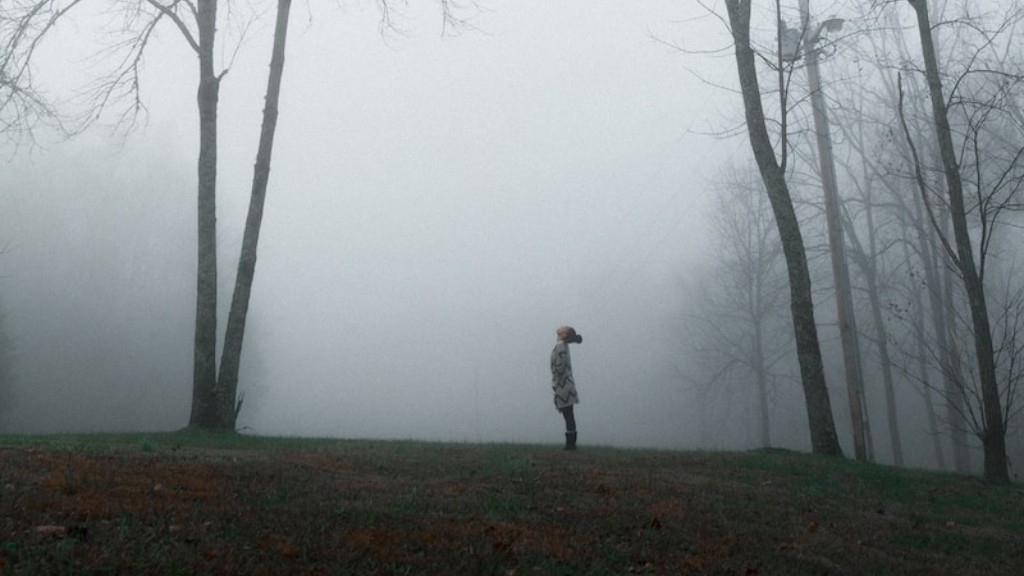Fantasy Movies
Fantasy movies are a type of film that visuals an imaginary world as opposed to the reality of the known world. Tales of mythical creatures, distant lands and extraordinary magical powers. It generally put together different types of genre such as action, adventure, science fiction and horror. The genre often carries a higher production value when compared to other genres, as well as unique sets, special effects, and high-end make up and costumes.
In the early days on film, fantasy movies couldn’t exist, due to the technical limitations on special effects. However, as technology advanced, so too did the production techniques, therefore allowing filmmakers to bring to life a realm of fantasy and imagination. The constant evolution of technology had a huge impact on the fantasy film genre, giving us the ability to create a world of creatures, beasts and magical powers.
The hugely popular franchise Lord of the Rings directed by Peter Jackson, really pushed the boundaries of fantasy films. A movie tailor-made for nerds and geeks that defied conventions of what was possible in the fantasy genre. Its success resulted in sequels and a large world of published material. It’s often seen as the defining film of the genre, setting the standard for producing large scale fantasy movies with complex storylines and interesting characters.
The Harry Potter franchise has achieved the same success as Lord of the Rings, creating a strong global presence with its wide array of books, merchandise, and blockbuster movies.This franchise had a much younger audience, filmed at close range, using a lot of close-up shots. Harry Potter deals with magic, wizardry and mankind’s battle between good and evil. Its success has seen Harry Potter become a household name, linking a whole new generation to the world of literature and film.
In more recent years, with the development of CGI, we have seen the emergence of a new subgenre of fantasy movies, the superhero film. Marvel’s series of hugely successful comic book adaptations, have been dominating the global box office for the last 12 years. Starting with Iron Man in 2008, the franchise has spawned 22 different movies, 8 television shows, and a plethora of merchandise. Taken together, its total worldwide earnings amount to $22.5 billion.
Magical Themes
A lot of fantasy movies present stories with magical themes, featuring elements such as magical creatures, fantastical landscapes and supernatural powers. These stories often portray the idea of questing, with characters that leave their homes to search for something far away. This motif was used in a lot of early fantasy films, such as The Neverending Story (a 1984 German fantasy film) and The Princess Bride (1987), with characters embarking on quest-like journeys, searching for adventure and enlightenment.
Magical elements are frequently applied in fantasy films, including the use of spells, curses, and potions. These elements, often presented in a comical or satirical manner, help to create a comic appeal for the fantasy. Often, fantasy movies will focus on characters that, through a magical item or spell, become extraordinarily powerful. Superhero movies often use this trope, presenting magic and supernatural energies as force for good and evil.
The notion of visually stunning magical environments, populated by fantastical creatures, has also become a staple of the genre. Movies like The Chronicles of Narnia and Alice in Wonderland have showcased the possibility of using incredible visuals to bring a fantastical world to life. The use of CGI technology in more recent fantasy movies such as Avatar James Cameron’s 2009 movie,have allowed filmmakers to create outlandish and unprecedented interdimensional worlds.
Monsters and Villains
Monsters and villains are another feature of many fantasy movies. Often, the villain of the piece is a powerful force of evil, a destructive force of darkness that seeks to enslave or terrorize the people of the world. Monsters, often giant or extra-terrestrial life forms, are used to create a sense of scale and awe. Aliens, dragons and trolls are all examples of the type of monsters used in fantasy movies. Many filmmakers will throw the most unexpected and absurd creatures into their movies, pushing the genre into new and innovative directions. An example of this is the movie Men in Black, where aliens of all shapes and sizes took center stage.
Another example of monsters in fantasy movies, is with the characters created by author J.R.R. Tolkien in his Lord of the Rings franchise. Tolkien created a fully realized fantasy world, replete with monsters, creatures and villains. There have been a number of adaptations of these novels, most notably Peter Jackson’s critically acclaimed trilogy.The production value of the movie was incredibly high, with a number of stunning battle scenes featuring creatures, trolls and dragons.
Fantasy movies have also explored, in more subtle ways, the inner monsters that lurk within us, our personal demons, and the power within us. The 2009 movie Where The Wild Things Are is an example of a movie exploring these themes, with its main character, Max, traveling to a surreal world inhabited by monsters and talking creatures. Through these interactions, he learns about the power of his own inner demons.
Social Context
Recent fantasy movies have used the genre as a way to raise awareness about larger social issues. Films such as Snow White and the Huntsman or Maleficent, set in a fantastical world, addresses issues such as women’s rights and sexism. In Maleficent, the gender roles were inverted, with Angelina Jolie playing a powerful female character. These movies explore gender dynamics and power structures in a fantastical way, making their social message accessible to a wider audience.
Also looking into our modern world, plenty of fantasy movies have critiqued our consumerist culture and the power of global brands. The use of satire and parody in movies such as Tron: Legacy or Shrek, allowed the filmmakers to explore this issue in an entertaining and humorous way.
On the flip side, fantasy movies can also be used to encourage positive and moral messages. The Chronicles of Narnia is seen as a film series that conveys good and moral values, teaching a powerful lesson about friendship, loyalty, and understanding.
Fantasy movies have always been, and will continue to be, powerful tools for exploring our understanding of the world and better understanding the human condition.
The Role of Technology
Technology plays a huge role in modern fantasy movies, from the type of cameras used, to the intricate special effects and digital editing. All these facets of film production have allowed filmmakers to create visually stunning worlds filled with amazing creatures and plots.
The use of digital compositing, often in combination with green screen technology, has opened the door for monsters, dragons and creatures to be added to film sets. Many gangbuster fantasy movies make use of this technique, such as the Lord of the Rings trilogy and the Harry Potter movies.
Motion-capture technology has also been used to create incredibly realistic creatures and characters, such as the trolls and goblins in Lord of the Rings, and the Beast in Beauty and the Beast (2017). The motion-capture technology ensures that the previously animated creatures remain lifelike and believable.
The use of 3D technology has enabled movie-makers to explore anatomical detail that was previously impossible. In Avatar (2009), James Cameron was able to use 3D technology to create an incredibly realistic and detailed Pandora, a planet inhabited by the Na’vi. Modern fantasy movies have set a new benchmark for what is possible with technology.
Real-world Techniques
Fantasy movies also employ many different real-world techniques to bring their worlds to life. The use of makeup and prosthetics, used to create lifelike characters, or to hide human actors in alien forms,is an important part of modern fantasy films.
Also included in fantasy movie-making, is the creation of entire world for the audience to explore. Utilizing massive warehouses, movie-makers can craft a very tangible and believable fantasy world, as seen in the Terry Gilliam’s ‘The Imaginarium of Doctor Parnassus’ (2009).
The creation of items such as props, weapons, costumes and sets also plays a vital role in fantasy films. These items give the production a tangible presence, as well as making it feel like we have truly entered a fantasy world.
These are all essential ingredients in making a fantasy film, making it look and feel believable, as well as visually stunning. By utilizing the right camera angle, setting and other production techniques, the filmmakers can get the most out of their fantasy world.
Global Appeal
Fantasy movies have seen an immense level of success globally, with audiences in both China and America drawn to these films. In recent years, China has become an important market for fantasy films, with a number of films being produced for the Chinese audience.
Hollywood has seen a number of major fantasy films in recent years, such as Wonder Woman, and the Marvel Cinematic Universe films. These films were hugely successful, grossing hundreds of millions of dollars worldwide.
It’s likely that fantasy films will continue to be popular, with more production companies investing in these films. As technology continues to evolve, so too will the fantasy films, with filmmakers able to explore new worlds and stories to keep the genre alive and entertaining.
Fan Communities
Fantasy movies have created a passionate fan-base, a community of individuals who embrace and celebrate these films by discussing and debating their favorite films. Some of these fan communities, such as The Harry Potter Alliance, Heroes Alliance and Middle Earth Network, have had a tangible impact on society, running campaigns to help promote literacy, charity and social justice.
The online fan communities have had a significant impact, creating an online platform for fans to discuss and debate their favorite films. These platforms can often give a wealth of information and insight into films, as well as getting updates on new films and sequels.
The internet also provides a platform for fans to produce fan fiction, creating their own stories based on their favorite films. These fan works often explore themes of morality, often using the established narrative as a backdrop.
These fan communities are the backbone of most modern fantasy films, and their contribution to the genre is often understated. By providing passionate discussion and feedback, fan communities help to shape the direction of future fantasy films.
Video Games Adaptations
The



